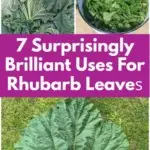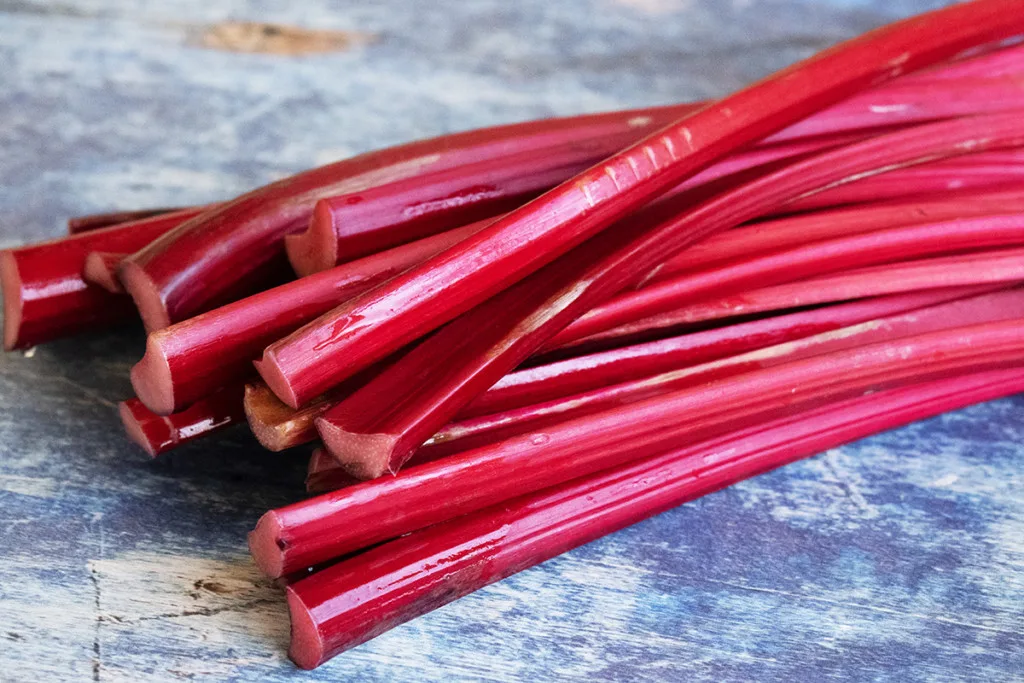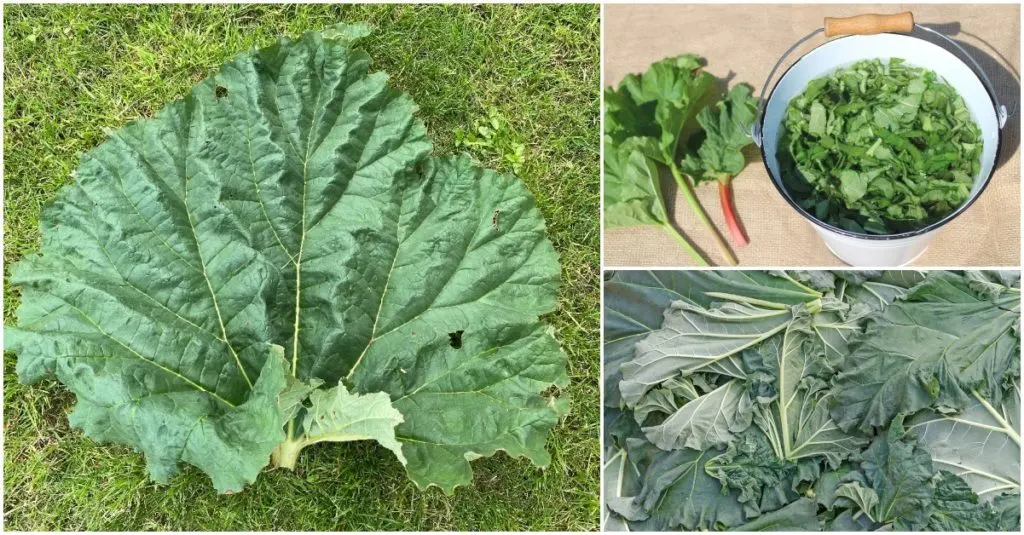
Rhubarb is an easy to grow vegetable that’s right at home in the perennial food garden.
Plant it once and it will produce for decades, growing nicely alongside other forever foods like asparagus, garlic, horseradish and strawberries.
The vibrant stalks, ranging in color from pink to red to light green, emerge in early spring. These are ready for the first round of harvests in May.
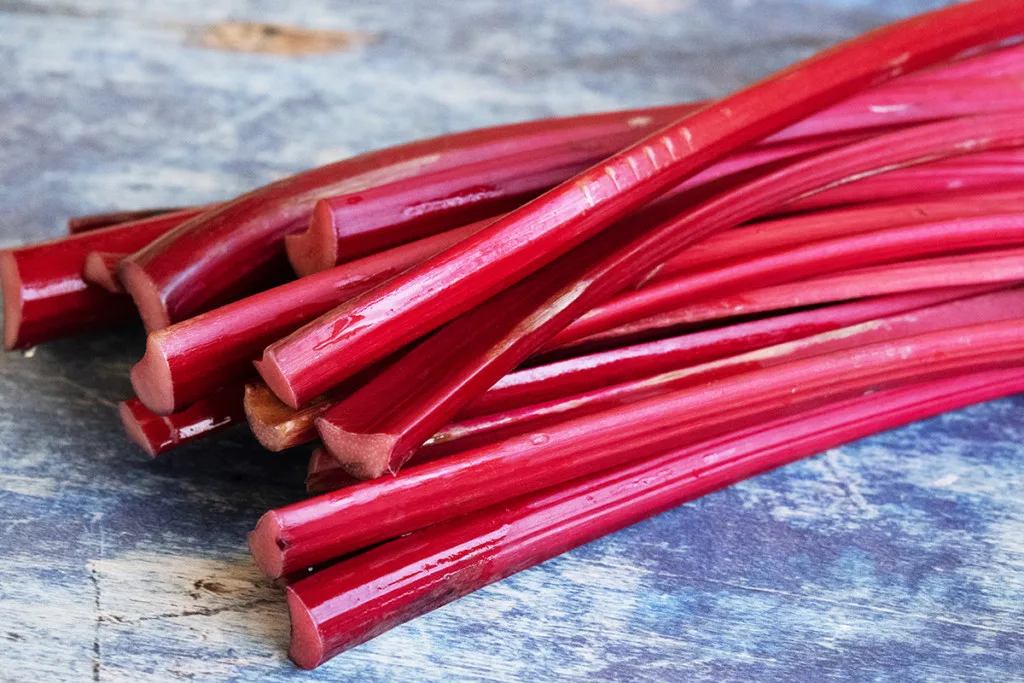
Naturally tart, rhubarb stalks can be prepped into a myriad of delicious sweet and savory recipes.
Don’t Eat Rhubarb Leaves!
It’s been well and truly hammered into to our heads by now that, while the colorful stalks are perfectly safe for consumption, you should never, ever eat the leaves.
This is because the large leafy greens contain oxalic acid. When eaten in high enough quantities, oxalic acid can cause a slew of stomach and kidney problems, and possibly even death.
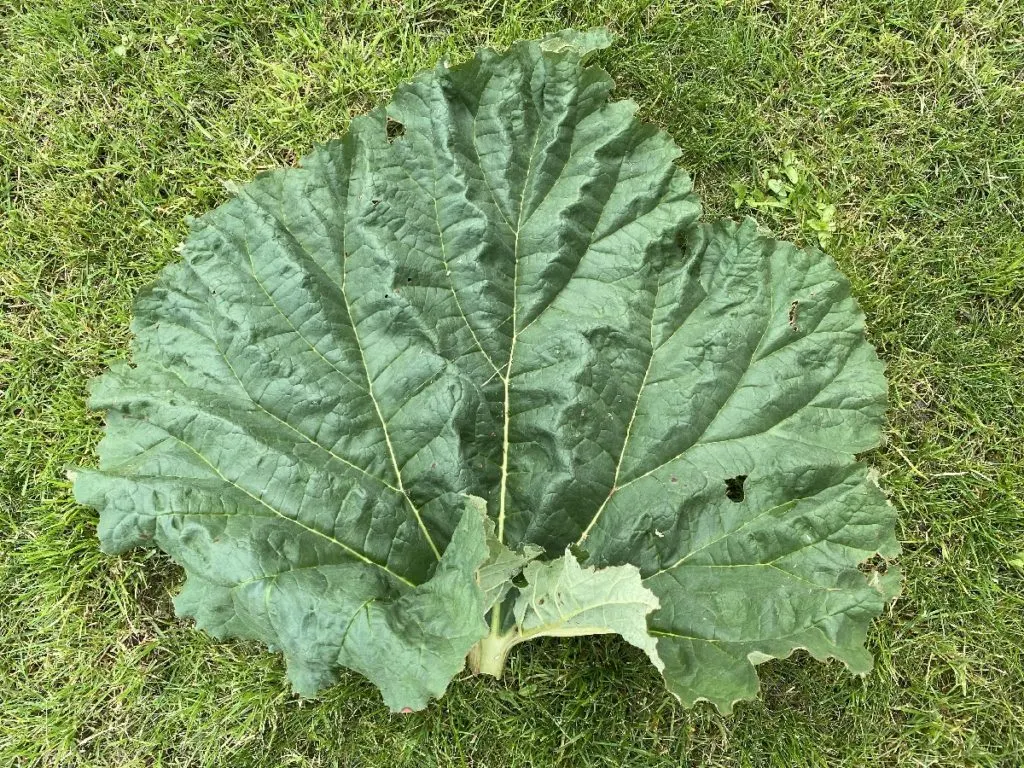
Rhubarb and Oxalic Acid
As the story goes, the first publicized cases of rhubarb leaf poisoning occurred during the First World War. To ease food shortages, the British government encouraged its citizens to eat rhubarb leaves to aid the war effort. The recommendation was promptly withdrawn after reports of sickness and death.
Beyond that, not much is known about the effect of eating rhubarb leaves. Poisonings are rare and only one case of death in 1919 has ever been reported in scientific literature.
Muddying the waters even more is that many herbs, fruits, and vegetables also contain oxalic acid. As does coffee, tea, chocolate, and beer.
Surprisingly, spinach, Swiss chard, and beet greens have – gram for gram – higher levels of oxalic acid than rhubarb leaves. And we eat them just fine.
One possible explanation for this discrepancy is that rhubarb leaves also contain anthraquinone glycosides. These phenolic compounds have been reported to be toxic in animal experiments and could very well be the true culprit behind rhubarb leaf poisonings.
It’s estimated that you would need to eat around 10 pounds of rhubarb leaves to reach a lethal dose of oxalic acid. Although consuming much less than that could still cause nausea, vomiting, and stomach pain.
Even if you’re tempted to take a nibble from one of those huge, heart-shaped leaves, remember that rhubarb leaves are very sour – just like the stalks.
7 Uses for Rhubarb Leaves in the Home and Garden
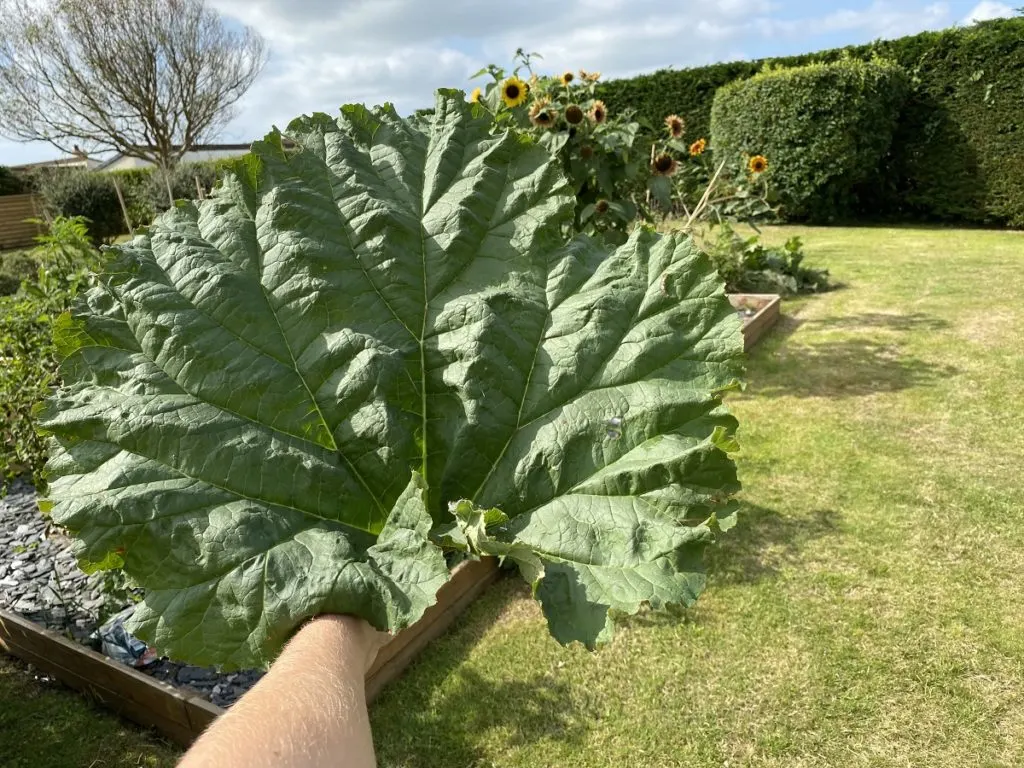
Rhubarb leaves are only toxic if you eat them. Otherwise, there are plenty of fantastic ways to put these large greens to good use.
1. Weed Barrier and Mulch
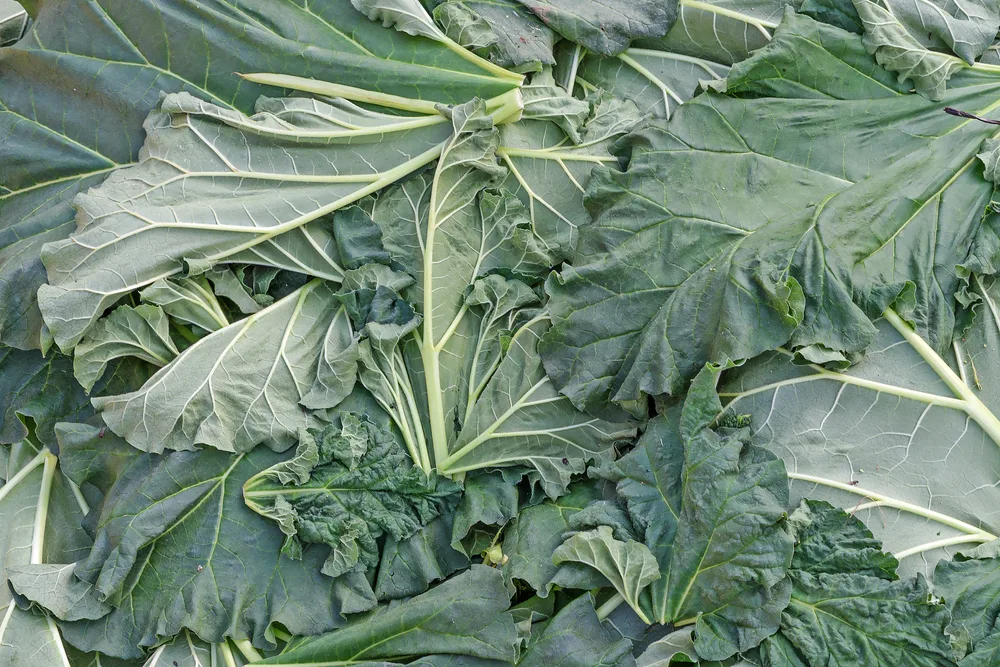
Some weeds are so tenacious that no matter how many times you pull them up, they just keep coming back again and again.
Laying down a weed barrier, like cardboard or newspaper and topping with mulch, really does help lessen the Sisyphean task of keeping the garden beds clear of weeds.
Rhubarb’s large and heart-shaped leaves lend themselves well as a weed barrier too.
Usually growing to be about a foot long as wide (and sometimes much more), rhubarb leaves can be laid over garden footpaths, around the base of plants, and between rows.
For weed suppression on-the-go, keep on layering new rhubarb leaves on top of older ones every time you harvest the stalks.
The leaves will break down rather quickly, so keep at it as the season wears on. As rhubarb leaves decompose, they have the added benefit of enriching the soil.
2. Garden Stepping Stones
Leaf casting is a marvelous way to create a natural look for your outdoor spaces.
Prominently veined leaves make for the most beautiful castings. Hosta, squash, elephant ear, coleus, and rhubarb are all good candidates for this project.
Set the foliage down, veiny side up, on a flat spot and apply a thick layer of concrete all over the leaf surface.
To ensure the casting is strong, use chicken wire or hardware cloth between layers of concrete. This will act as rebar and ensure the stepping stones last a long time.
After the concrete has dried, leaf casts can be flipped over. Remove the leaf by peeling it off the concrete form. If it sticks, set it out in the sun or use a scrubber to remove the green bits.
3. Bird Bath
This same technique can be used to make the perfect water-holding bird bath.
Instead of working on a flat surface, sand is mounded up and the upside down leaf is placed on top. As the concrete dries, it will create a bowl shape for the leaf cast.
A wire brush can be used around the leaf edges to shape and finish the final product. Add a coat of paint or leave it plain.
Leaf castings can also make gorgeous wall hangings too, indoors and out.
4. Cleaning Solution
Oxalic acid is a powerful cleaning agent used in commercial products like Bar Keepers Friend. As a non-abrasive and bleach-free powder, it is safe to use on numerous surfaces like stainless steel, ceramic, porcelain, fiberglass, chrome, copper, aluminum, brass, and more.
Effective for cleaning, polishing, bleaching, and rust removal, oxalic acid is also excellent for lifting stains from wood without altering the wood’s natural color.
While it may not be as potent as store-bought cleansing products, oxalic acid is water soluble and can be extracted from fresh rhubarb leaves by boiling them in a pot of water for about 30 minutes.
Strain out the leaves and use the liquid solution to shine up pots and pans, scrub stains from brick, stone, vinyl, and wood surfaces, and remove rust from sinks and tubs.
Even outside the body, oxalic acid is toxic stuff so always wear latex gloves, a dust mask, and eye protection when working with it.
Thoroughly rinse all surfaces it was used on (including the pot used to extract the solution) with plain water to clear away any residual oxalic acid.
5. Organic Insecticide
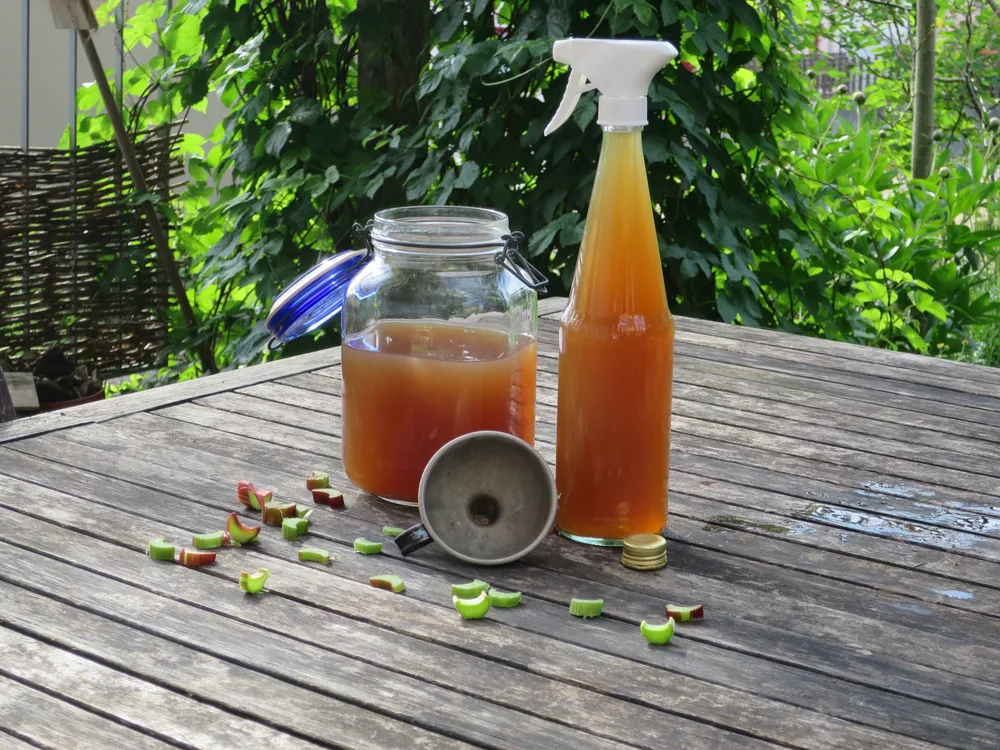
Rhubarb plants, once established, are fairly easy going and trouble free.
Few pests seem to bother the plant. Most commonly, slugs and snails, rhubarb curculio, and common stalk borer are the ones to watch out for – but these never seem to do enough damage to actually impact the quality of the harvest.
It is thought that the high level of oxalic acid in rhubarb leaves is what makes them so unappealing to many foliage-chewing insects.
Many plants – including wood sorrels, umbellifers, Brassicas, and Virginia creeper – produce oxalic acids as a natural defense against hungry insects, birds, and scavenging critters.
To make an insecticidal spray, boil rhubarb leaves in water for 20 to 30 minutes. Allow it to cool, strain out the leaves, and transfer to a spray bottle. Add a couple drops of liquid dish soap before spritzing your plants.
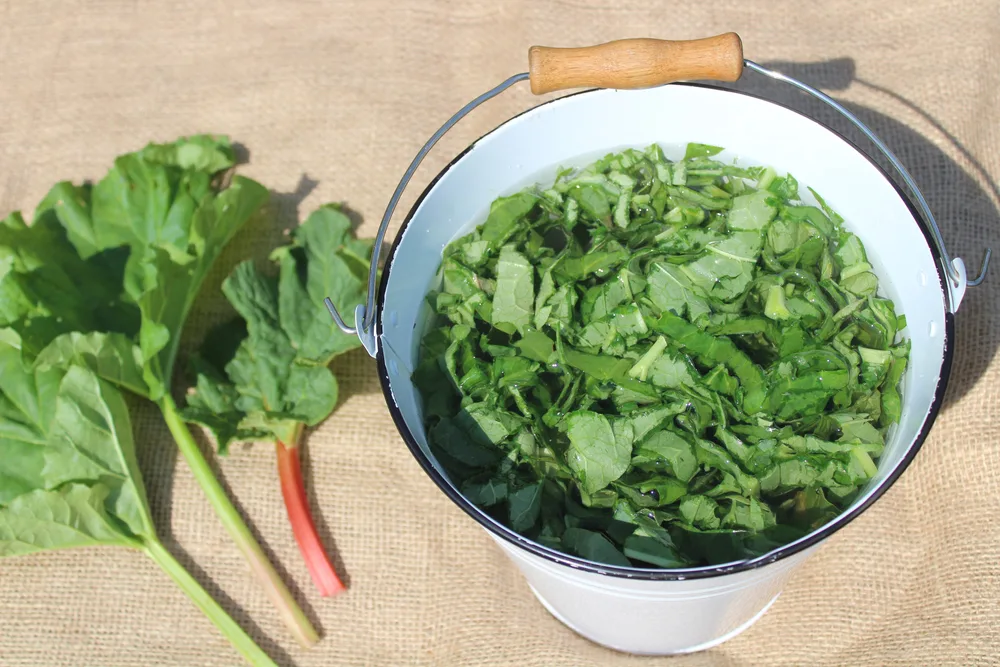
It might be okay to spray food crops with rhubarb leaf pesticide, especially if you give fruits and vegetables a really good wash before eating them.
However, we recommend playing it safe and only using it on ornamental plants like hostas and rose bushes.
Always test the spray on a small portion of foliage first and wait a couple days to see if there is a reaction before dousing the whole plant.
6. Natural Dye
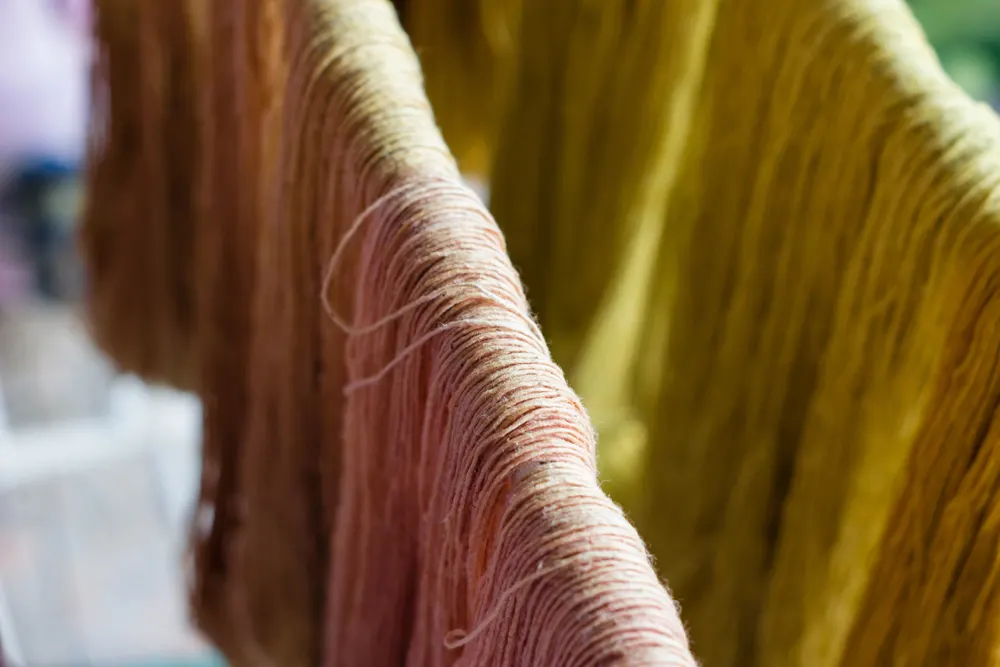
The garden can be a wonderful source of dye colors for natural fabrics like wool. Practically all colors of the rainbow can be produced from the roots, berries, bark, leaves, and flowers of various plants.
To create a dye bath with rhubarb leaves, boil them in a large stock pot. The number of leaves you use and the length of cooking time will determine the final hue.
Fewer leaves and a shorter cooking time will produce a soft yellow color. This amazing chartreuse hue was created by cooking 2.5 gallon bags of rhubarb leaves 3 to 4 times to extract color before tossing the skein of yarn in.
Normally you would need to add an acid to the dye bath for the colors to hold to the fabric. But with rhubarb leaf dye, you don’t need to use vinegar or citric acid – the oxalic acid present in the leaves will act as its own mordant and dye fixative.
7. Compost
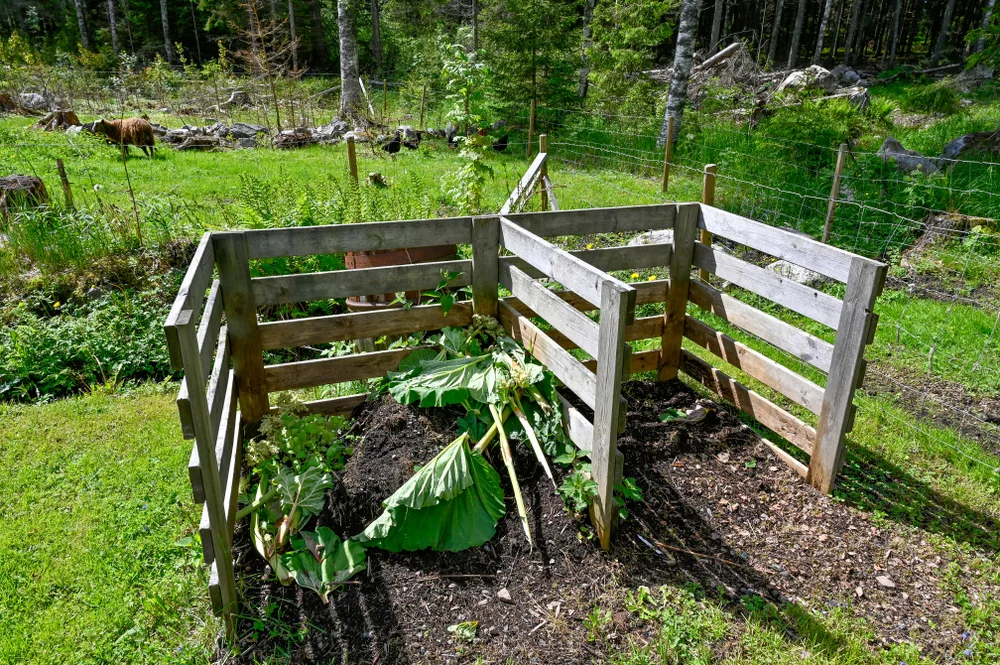
Last but not least, rhubarb leaves are a good source of nitrogen and can always be tossed into the compost pile.
This might seem terribly counterintuitive since the leaves are toxic!
But the oxalic acid in rhubarb leaves decomposes quickly and won’t harm the microbes working the compost heap.
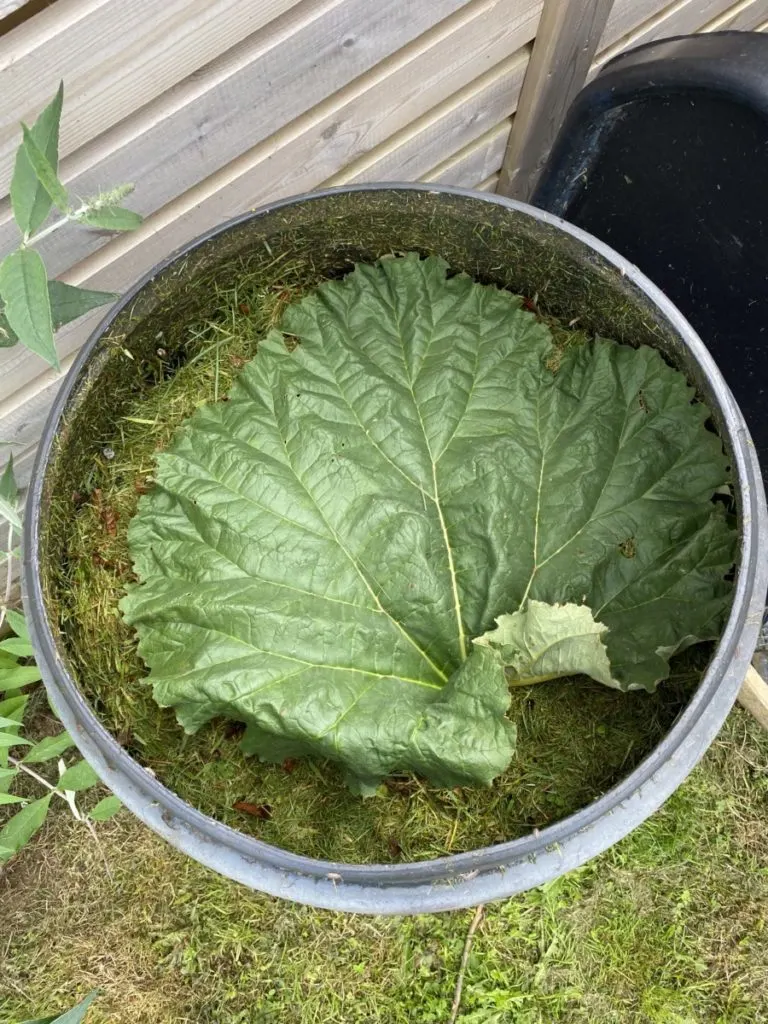
The chemical formula for oxalic acid is C2H2O4 – meaning it is made up of carbon, hydrogen, and oxygen atoms. These natural elements break down readily. Earthworms, bacteria, and fungi in the compost pile will take care of the rest.
The finished humus will be safe to use all around the garden, including the vegetable patch.
Even if some oxalic acid were to remain in the compost, oxalates are not poisonous to plant life and won’t be absorbed by the roots of plants.
How To Use Rhubarb Stalks
Rhubarb leaves are great, but let’s be honest, it’s all about those delicious stalks. If you are looking for some creative uses for rhubarb stalks, then look no further than our article below:

Get the famous Rural Sprout newsletter delivered to your inbox.
Including Sunday ramblings from our editor, Tracey, as well as “What’s Up Wednesday” our roundup of what’s in season and new article updates and alerts.


